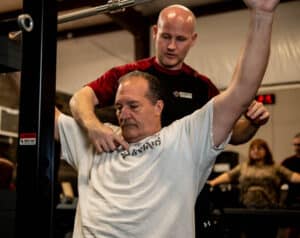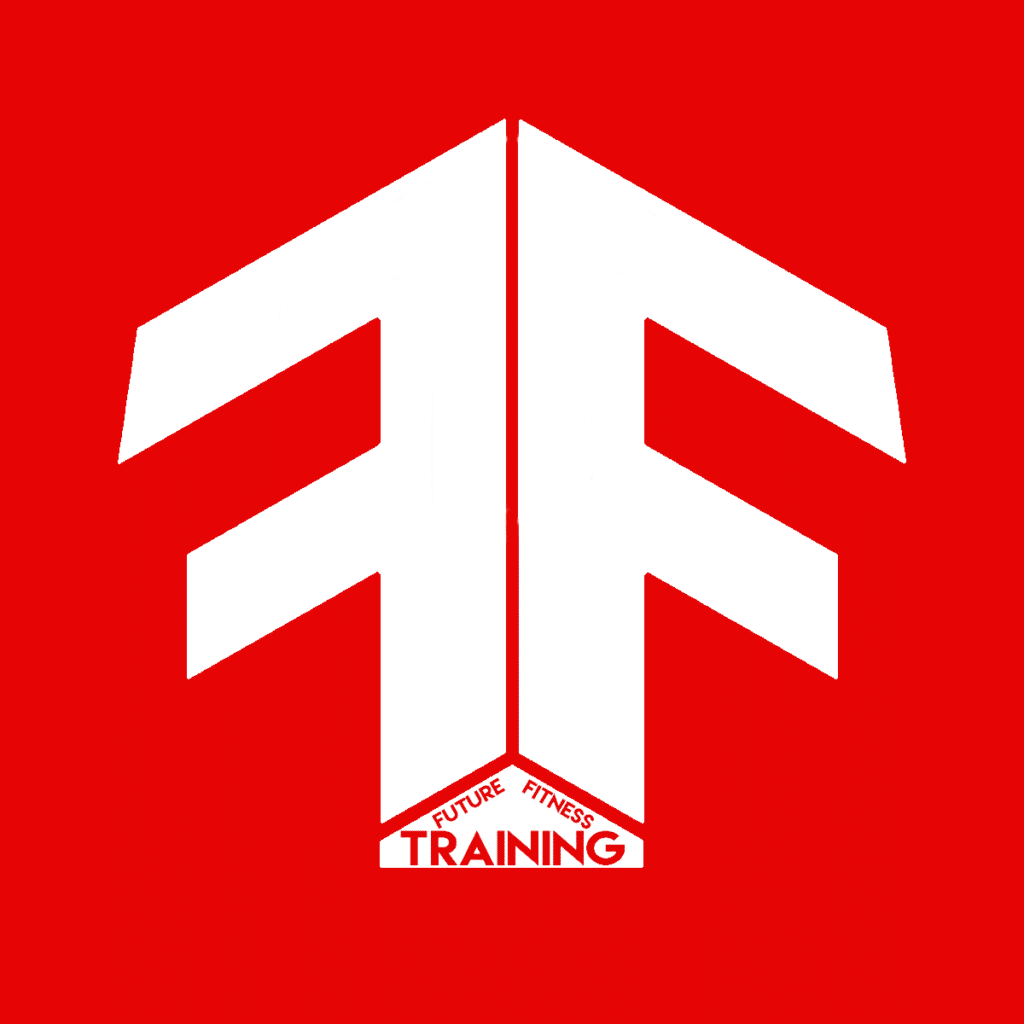The common belief is that strength training helps with building muscle, and cardio exercise helps with losing weight. Seems like a fair assessment, right? Not quite. New research suggests you can lose up to 1.4 percent of your body’s overall fat composition strictly through resistance exercises. As a result, strength training for weight loss is an effective option that deserves more of your attention. Coupled with cardio, strength training can be part of a holistic workout plan.
And the best part is that we at Future Fitness Training offer supportive in-club strength training to help you build muscle and lose weight. However, you may wonder how strength training contributes to weight management and overall health. In this article, we’ll explore the benefits of strength training from a scientific, biological, and practical point of view. Keep reading to learn more.

The Role of Strength Training in Weight Loss
You’re probably familiar with the old adage, “Use it or lose it.” In fewer places is this statement more true than with lean muscle and weight management. Here’s the deal: Your body fat percentage naturally increases over time if you fail to improve it with lean muscle through strength training. In short, strength training helps you preserve and build muscle mass—whether you’re 16 or 60.
Safe Practices in Weight Training
Knowing the various strength training exercises is one thing, but performing them correctly for safety and optimal results is another. For this reason, ensuring you are using proper form and technique is critical to avoid injury. Let’s cover these essential components in a little more detail.
Proper Form and Technique
Simply put, proper form and technique are the correct ways to do a particular exercise.
These details usually involve micro-adjustments to the movement and performance nuances of each workout. Using proper technique will help ensure your safety and longevity, improve your efficiency, and even ensure balanced muscle development.
Some of the components that contribute to proper form and technique include:
- Range of motion
- Body positioning
- Breathing technique
- Core engagement
- Proper posture
- Body and weight alignment
- Controlled movements and more
Proper form and technique are critical to optimizing workouts for any exercise regimen. Moreover, they ensure you get the most for your time commitment.
For this reason, it’s important to educate yourself on the right movements and techniques. This is where working with a personal trainer can be helpful as they can give you instant feedback and advice on correct form and proper technique.
Avoiding Injury
When people start strength training for weight loss, the typical culprit that halts their progress is injuries.
It could stem from rounding your back during a dead lift, lifting more weight than you can handle, or using momentum instead of controlled movements. Regardless of the reason, injuries usually happen when you least expect them. And what’s worse, the result is always the same: Pain, discouragement, and slowed progress.

Here are some considerations to avoid injuries while strength training for weight loss:
- Listen to your body: You’ll know when you’re pushing yourself too far too soon. If you feel any sudden or sharp pains, dizziness or lightheadedness, nausea, fatigue, or compromised performance, your body is trying to tell you something. Listen to it and—if necessary—call it an early training session. Your risk of injury increases when you ignore these warning signals your body is giving you.
- Slowly increase effort: Whether it’s the amount of weight, number of reps, or the level of intensity, you want to increase these variables slowly. A steady progression allows your body to adapt to the change and dramatically reduces your risk of injury.
- Hire a personal trainer: While these tips are helpful, nothing beats having a professional on your side who can give tailored advice in real-time. As a result, the best way to avoid injury is simply to hire a personal trainer. They are professionals and know what to look for in proper form and technique.
One of the most frustrating experiences of strength training for weight loss is losing momentum toward your goal due to a (completely preventable) injury. But by taking the proper precautions, you can drastically reduce the odds of hurting yourself. As a result, you’ll reach your fitness goals much quicker and more efficiently.
Sample Workout Plan for Weight Training
You need a plan to reach a goal—in fitness or any other area.
Strength training for weight loss is no exception. For this reason, you need to have a proven workout program, a training frequency you can commit to, and a nutrition plan to support your health goal.
Here are those key components broken down in more detail so you can get the health benefits of resistance training.
Weekly Schedule
Training frequency matters; in fact, it’s absolutely critical.
However, the truth is that we all have lives. It can be challenging to juggle work obligations and family responsibilities while also trying to lose excess body fat. As a result, you have to choose a time commitment that works for you.
Because here’s the deal…
You don’t have to spend two hours a day in the gym five days per week strength training for weight loss. There’s this myth that you need resistance bands, weight machines, high-intensity interval training, and huge amounts of energy expenditure to succeed in your weight loss plans.
Luckily, strength training programs for normal people are not that intense.
In fact, that kind of aggressive approach can quickly lead to burnout, which can cause you to give up.
Don’t get me wrong, vigorous activity is important. But what’s more important is committing to consistently training a certain number of times per week. That’s it.
Remember this: Consistency rather than intensity.
Training three days a week for one hour a day is more sustainable than the aggressive approach to fitness and weight loss. So, it’s important to determine your ideal workout frequency and then commit to that schedule.
Strength Training Exercises
To maximize your workouts, you need the right workout routine for weight loss.
Naturally, some exercises will be better than others when it comes to strength training for weight loss. For this reason, having a basic understanding of the fundamental resistance exercises can be helpful. It will help you determine the best exercises to meet your fitness goals.
Here are some resistance training workouts to get that caloric burn going!
- Barbell squat
- Dead lift
- Overhead press
- Bench press
- Pull-ups
Add these exercises to your weekly routine for a full-body workout. They hit every major muscle group and will help with your weight loss efforts.
You’ll just need to ensure you’re doing them safely during your strength training workout.
At Future Fitness Training, our certified personal trainers guide you through performing these exercises safely and efficiently. That’s only one advantage of training at a private gym like ours. We also keep a clean facility, friendly staff, and a safe environment that supports your weight loss goals.
Dietary Considerations
As the old saying goes, “You can’t outwork a bad diet.”
Yes, exercise is crucial; however, a balanced diet with a moderate calorie intake will be the deciding factor regarding how much body weight you lose and how quickly you lose it. As a result, we place a strong emphasis on nutrition planning. Here are a few dietary suggestions to help you get started:
- Leafy greens
- Salmon and fatty fish
- Eggs
- Greek yogurt
- Nuts and seeds
- Berries
- Chicken
- Whole grains
One crucial element for diet and exercise is to get support.
Too often, people turn to strength training for weight loss only to give up when they feel the process becomes too overwhelming. In fact, research suggests that people fall short of their weight loss goals for this very reason. The key here is to find accountability and support.
And that’s what our certified personal trainers at FFT are trained to help you with.
The Importance of Recovery
If you’re a high-octane powerhouse excited to get in the gym, I commend you.
That kind of enthusiasm will go a long way in your exercise routine. However, it’s essential to also consider the role of rest and recovery in your fitness and weight loss journey. Your body needs time off to fully recuperate and return to its best.
For this reason, we need to take a closer look at the importance of recovery.
Role of Rest Days
When you engage in different forms of exercise, your body’s glycogen reserves become depleted.
Glycogen is an energy source that’s stored within your body’s muscles. Exercise depletes these reserves, causing exhaustion and muscle fatigue. As a result, your body needs rest days to replenish the glycogen in your muscles and prepare for the next training session.
So, rest days are crucial for your body to recover and return to training again refreshed.
Recovery Techniques and Practices
Now that you understand the necessity of rest days, you may wonder what recovery techniques and best practices you should follow. Here are a few simple tactics to make the most of your recovery time and return to training fully rejuvenated.
- Get 7 to 8 hours of sleep each night
- Stay hydrated (drink 8 to 10 cups of water daily)
- Do stretching and mobility work
- Ensure you consume a healthy diet
- Get a massage
These simple best practices have a twofold advantage: they will ensure your rest period is well spent, and you prioritize self-care.
Get Support for Your Weight Loss Goals
When it comes to strength training for weight loss, it’s a long and lonely journey by yourself. Not only that, but you’ll compromise your success without the proper accountability. At Future Fitness Training, our team of certified trainers is here to support you every step of the way. So, if you’re ready to reach your health and weight loss goals, contact us today for a free fitness assessment.



